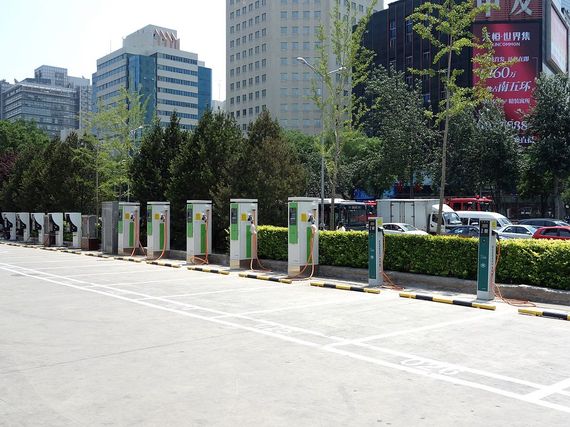Across the world, electric vehicles (EVs) are increasingly recognized as one of the greenest choices for personal transportation, and for good reason: avoiding the worst impacts of climate change requires us to phase out the use of oil in transportation. EVs, with their higher operating efficiencies and ability to use electricity from clean sources like renewable energy, offer a way to meet our society’s transportation needs while leaving the majority of the world’s remaining oil reserves in the ground.
However, a lesser-known benefit of EVs is their ability to make better use of cars as a resource to the power grid system. Most cars bought today will only be on the road for five percent of their lifespan; the other 95 percent of the time, these cars lie unused in garages and parking lots.
Up until now, we have been willing to spend five figures on machines that are unused 95 percent of the time because, during the five percent of the time that we do use them, they are very useful. But electric vehicles also have the potential to tap into that massive block of unused time by making use of their charging demand and sizeable storage capacity to provide services to electric utilities. EVs have a much higher energy demand than most household appliances, giving them a greater ability to influence operations on the electricity grid. If EV charging is conducted in a planned and orderly manner, with EV drivers responding to signals from utilities about when to charge their EVs, then they can actually be used to improve the overall efficiency of the electricity grid.
This process is called “demand response (DR),” and utilities already utilize it. When customers sign up for demand response programs, utilities ask customers to reduce electricity consumption at certain time of the year and/or on particular days for a limited number of hours to relieve the power system peak and/or congestion issues. Customers receive incentive payments for joining the program, and also benefit from reducing their energy load because the utility pays them for the reduction. Utilities benefit from avoiding the need to procure expensive resources from the supply side and/or invest in costly peaker power plants. This translates to lower energy prices for consumers and reductions in COemissions to the environment.
Electric vehicles are beginning to take advantage of this area of grid services. In California, BMW is partnering with the California utility PG&E to deliver planned load reductions to the grid by asking participating EV users to delay charging for short periods of time (and paying them for their participation). In Denmark, a pilot project on Bornholm Island tested the use of specialized software to plan charging times for EV fleets, using information from Denmark’s electricity market to charge EVs when electricity was most available (and least expensive). Finally, in Delaware, a partnership between NRG and the University of Delaware has modified EVs to feed energy back into the grid when demand for electricity fluctuates, helping the utility to balance supply and demand and netting a small profit for each car owner.
NRDC recently compiled these examples and other best practices into a report entitled “Creating the Grid-Connected Car: International Experience Using Demand Response with Electric Vehicles.” The report describes how different companies and organizations are developing ways to make sure that parked EVs are not just wasting space. By exploring techniques that allow EVs to improve electricity grid operations, these projects are showing how stationary cars can actually be productive, keeping emissions out of the atmosphere and putting money into the pockets of customers and utilities alike.
NRDC is not just shining a light on past efforts. We are taking the lessons from these examples and using them to implement a new pilot project in the world’s fastest-growing EV market: China. Last year, EV sales in China grew by 343% (including plug-in hybrid electric vehicles), thanks to substantial support from the government, which views EVs as a key solution to China’s pollution. However, despite setting ambitious growth targets, China has yet to begin exploring how it can make use of these vehicles’ charging demands once the EV market scales up.
NRDC China’s Demand Side Management team aims to change that by incorporating electric vehicles into a demand response program it has helped to design and implement in Shanghai, one of China’s largest EV markets. Later this year, NRDC will release a collaborative report with the Energy Research Institute of China’s National Development and Reform Commission, which will analyze how EV charging can be used as a demand response resource in Shanghai and what benefits it would bring to society as a whole. These include cost savings for utilities, financial incentives for consumers, and, because China’s electricity system is still primarily coal-powered, massive environmental benefits as well.
As some like to say, this will be a win-win-win, as utilities, consumers, and the environment will all enjoy a collective victory. We look forward to working with our Chinese partners on this exciting pilot project.
This post was co-authored by my colleagues Hyoungmi Kim and Princeton in Asia Fellow Colin Smith.

